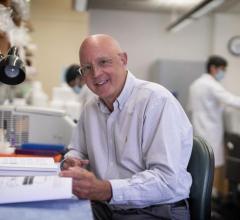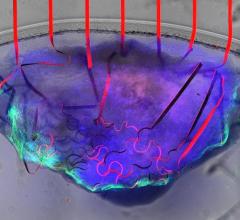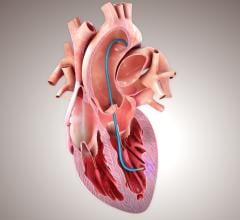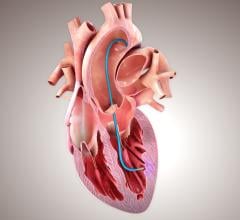
Getty Images
August 3, 2022 — A defibrillator administers a therapeutic shock to a patient's heart in life-threatening circumstances such ventricular fibrillation, cardiac arrhythmia, and pulseless ventricular tachycardia. A defibrillation treatment depolarizes the heart's muscles and restores its normal electrical impulse. External defibrillators use paddles or electrode pads to diagnose and fix abnormal heart rhythms in cardiac arrest.
Increasing public and private interest in PADs has fueled business growth. Increasing elderly population, which has a higher risk of cardiac arrest, and heart disease also drive market expansion. Defibrillators can pace and defibrillate the heart. AEDs can be manual or portable (WCDs). Due to their efficacy and ease of use, AEDs are widely used to treat SCA. Pricing pressure is stifling the defibrillator market.
Cardiac Diseases Will Drive Market Growth
Increased prevalence of cardiac problems across age groups due to demanding jobs, sedentary lifestyles, cigarettes, alcohol, and substance misuse is expected to fuel AED market expansion.
"Global epidemiology of atrial fibrillation: an increasing epidemic and public health challenge" was published in January 2020 in the International Journal of Stroke. It stated that the worldwide prevalence of atrial fibrillation was 37,574 million cases (0.51% of the global population), which increased by 33% over the last 20 years. According to this analysis, the number of patients with atrial fibrillation could climb by 60% by 2050. Growing arrhythmia burden may enhance market growth during forecast period.
Aging Population and Public AEDs
The ageing population is another industry driver. According to the UN Department of Economic and Social Affairs, the number of 65-plus individuals worldwide will climb from 727 million to 1.5 billion by 2050. The population over 65 is expected to climb from 9.3% in 2020 to 16.0% in 2050. Age increases the risk of chronic diseases like CVD.
Increased public AED use is also driving market expansion. More train stations, schools and universities, shopping centers, airports, malls and leisure facilities are installing the device as people learn about its life-saving powers. In a medical emergency, anyone can use public access defibrillators (PADs). As SCA instances rise, many countries are installing PADs in public spaces.
Defibrillator Innovations Provide Profitable Opportunities
Due to developments in next-generation defibrillators, the Defibrillators Market is likely to rise faster than expected. These Market Defibrillators assist detect and address device-related issues. SCA is a life-threatening disorder and the world's leading cause of death. Early intervention and defibrillation can control this disease. Due to rising use by heart failure patients worldwide, AEDs lead the global external Defibrillators Market, which is expected to grow at the fastest rate in the future. As more AEDs became accessible, so did demand. Manual external Defibrillators are second only to wearables. Implantable and automated external defibrillators may face market issues in the next years. S-ICDs and MRI-compatible ICDs & CRT-Ds may also boost market growth in the coming year.
Regional Overview of Global Defibrillator Market
North America, Europe, Asia Pacific, Latin America, and the Middle East & Africa make up the defibrillator market.
North America held almost 40% of overall revenue in 2021. Favorable laws, important company activities, and technologically advanced healthcare facilities in the U.S. and Canada all contributed to the market's growth in North America. In 2020, Boston Scientific sold 33,000 CRT-Ds, including Resonate, Autogen, Dynagen, Incepta, and Cognis. 16,500 were registered in the U.S. alone, indicating a high adoption rate.
According to the CDC's September 2021 report, 659,000 Americans die from heart disease per year and 805,000 have a heart attack, of which 605,000 had their first and 200,000 had already had one. This high heart attack rate is expected to drive U.S. market growth.
Asia Pacific's CAGR is expected to be 7.88% over the projection period. This is due to improvements in healthcare infrastructure, more patients, and cardiovascular illnesses. Due to high defibrillator penetration and favorable regulation, Japan has led regional expansion. Nihon Kohden, a Japanese industry leader, forecasts 2020 manual external defibrillator sales of over $66,000.
Key Highlights
- The Global Defibrillator Market size was valued at USD 11.30 billion in 2021 and is predicted to reach at USD 21.09 billion by 2030, increasing at a CAGR of 7.18% from 2022 to 2030.
- By Product, the Global Defibrillator Market is segmented into Implantable Cardioverter Defibrillators (ICDs) and External Defibrillators (ED). ICDs, or implantable cardioverter defibrillators, have a market share of more than 72 percent in 2021, making them the industry standard.
- By End Use, the Global Defibrillator Market is segmented into Hospital, Pre-Hospital, Public Access Market, Alternate Care Market, and Home Healthcare. In 2021, hospitals had the greatest revenue share, accounting for more than 75 percent of total revenue.
- By Region, the Global Defibrillator Market is segmented into North America, Europe, Asia Pacific, Latin America, and the Middle East & Africa. Over 40% of the revenue in 2021 came from North America.
For more information: https://straitsresearch.com/


 April 16, 2024
April 16, 2024 








